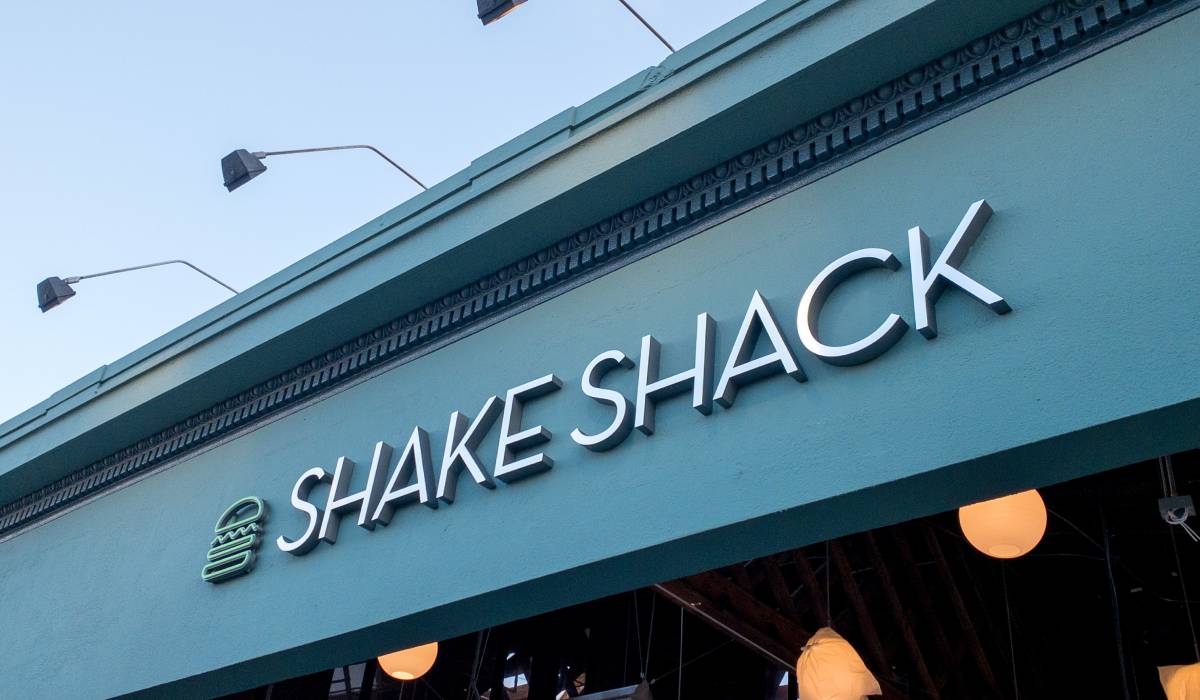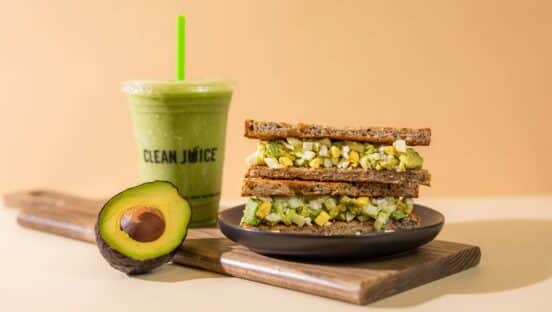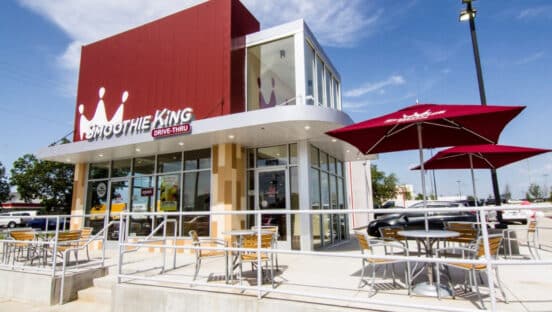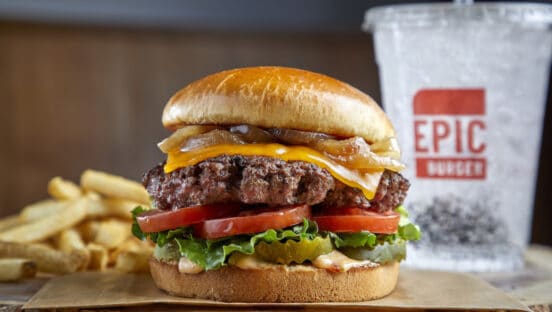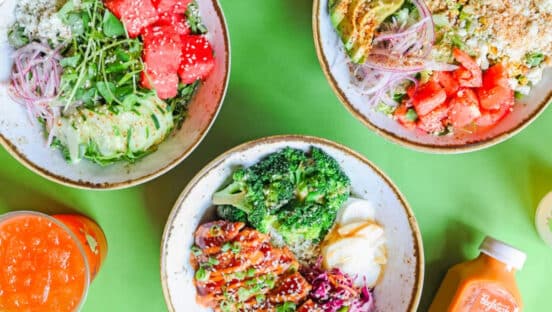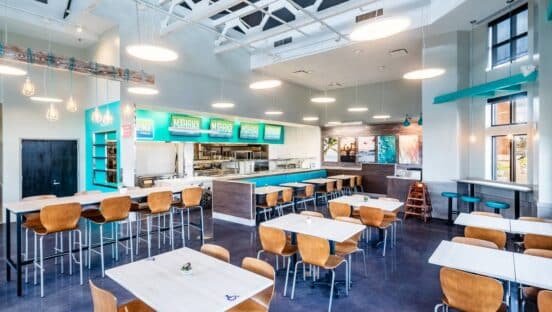To push past some overarching industry headwinds, Shake Shack has become serious about pricing.
The brand increased prices by 3–3.5 percent. On digital channels, the 350-unit fast casual implemented a 10 percent upcharge, something guests have been willing to pay given the convenience. Historically, the company has a 17-year history of taking only 1–2 percent annually.
“We don’t love taking more price,” CEO Randy Garutti said during the chain’s Q3 earnings call. “We want to be a brand that sustains the test of time. Even now with these pressures, we may be taking less price than we could. However, we are going to be patient about it.”
CFO Katie Fogerty added the brand still has “many more Shacks to build and to open, many new markets to enter, and many new formats,” so being mindful of price is essential.
When analyzing pricing, Shake Shack determines whether guests will continue to have a great experience and if the restaurant can sustain itself for many years to come, Garutti said.
“If we sense that we continue to have added pressures and it would be accepted and well-received by that community, then we may certainly choose to take more price in those, but we’re long-term thinkers,” Garutti said. “We’re not going to overreact … Shake Shack is not unique in this conversation. The world is experiencing very high inflationary pressure. Let’s be patient, and let’s see where that goes in the coming quarters.”
READ MORE: Urban Recovery Continues to Challenge Shake Shack
For months, Shake Shack’s sales performance has been a tale of urban and suburban markets trending at significantly different levels. Urban same-store sales were down 11 percent from 2019 in September, but improved to a decrease of 8 percent in October. This was a solid jump from the 23 percent decline the brand saw in Q2. Suburban same-store sales grew 7 percent in October versus two years ago.
Overall, Shake Shack reported $193.9 million in total revenue, its highest quarterly mark in company history, but same-store sales lowered 7.3 percent over 2019 (and up 24.8 percent compared to the same period last year).
For October, the chain’s comps were nearly back to 2019 levels. Regionally, the brand saw Texas and some Northeastern units at high-single to low-double digit numbers above two years ago.
Typically, October sales are slower, but Shake Shack outperformed its historical averages and beat September’s levels, generating $70,000 in average weekly sales. The month also saw the brand’s highest company-operated sales day, hitting just under $3 million.
“None of us knows what’s ahead in this environment, but we’re hopeful this momentum continues,” Garutti said. “Yet as sales keep climbing back, we acknowledge profitability challenges remain, and there’s a fair amount of uncertainty for the world in the coming quarters.”

During Q3, Shake Shack sustained around 100 days of full closures due to hurricanes in the South, heavy flooding in the North, and COVID, totaling $850,000 in lost sales.
Staffing brought shortened hours occasionally, and the brand experienced moments of missing key goods as the national supply shortage raged on. Beef prices surged 30 percent year-over-year, and executives expect to be in an inflationary environment for the foreseeable future.
With turnover elevated for much of the industry, Shake Shack is doing more than ever in its recruitment and retention investments, Garutti said. In the company’s Shift Up program, nearly 60 shift managers are undergoing leadership development to work their way up to salary-level managers.
In July, the company invested in higher wages and retention bonuses, but Shake Stack still remains below optimal staffing levels. And these initiatives come at a cost, Garutti said.
READ MORE: Shake Shack to Invest More than $10 Million in Restaurant Workers
The average team member has a starting wage of around $15 per hour, 13 percent higher than what was offered in Q4 of last year.
“I do believe the restaurant business is an incredible occupation,” Garutti said. “I’ve lived it my whole life. And I have seen how many people we have lifted from entry-level jobs into leadership jobs across the country. The restaurant business is not for everyone, but it is for a lot of people. And we’ve got to keep focusing on that.”
Because guests have repeatedly requested it, Shake Shack is in the early stages of testing tipping capabilities in two stores. Garutti, however, doesn’t expect a massive rollout anytime soon.
“We don’t ever want to be the brand where people feel compelled, guilty about it like they have to do it,” Garutti said. “It should only be for superior service and hospitality.”
Through the persistent problems of the quarter, Shake Shack found opportunities with technology. For instance, its new kiosks are said to stimulate more efficient ordering and enhance customer service. At locations that have it, kiosks and digital generate more than 75 percent of sales combined. Soon, a pickup screen will direct customers to where they should be waiting for their orders.
Alongside this, Shake Shack launched a new website and rolled out digital-only menu items—such as the Black Truffle Burger and Parmesan Black Truffle Fries—to drive increases in guest acquisition, engagement, and sales.
First-time app and web purchasers grew by 14 percent in the quarter, bringing the total to 3.2 million since mid-March 2020. Once a guest is brought into the digital landscape, Shake Shack said it sees higher frequency and customer lifetime value. In total, the brand has retained around 80 percent of the digital business it built at the peak of the pandemic.
“If we do it right and we will, technology should enable hospitality,” Garutti said. “Digital hospitality should exist in the way that our products work, in the way that they should be on your side and make the experience easier. I can tell you as a consumer, I don’t ever want to wait in line.”’
Under its pipeline for next year, Shake Shack will open 45 to 50 U.S. stores. Around 25 percent of these will have drive-up or walk-up windows, and 10 will be drive-thru units. For this quarter, the brand opened five restaurants; in Q4, it intends to launch 10 to 13. So far this year, Shake Shack has opened 25 corporate locations and 21 licensed units. The company ended the quarter with 350 stores systemwide, including 205 corporate units, 24 U.S. licensed stores, and 121 international licensed outlets.
Globally, the chain has set its sights on China and the Middle East. In Q3, the fast casual opened stores in Singapore, Monterrey, Mexico, and Hangzhou, China.
“We love this part of our business,” Garutti said. “It’s really asset-light, cash accretive, and brand exciting. So everything about it is an important and exciting piece for our business. We can’t wait to keep growing it.”
Next quarter, Shake Shack expects to surpass $1 billion in systemwide sales for the year for the first time.
“We’re not immune to the challenges that continue to impact the overall hospitality industry landscape,” Fogerty said. “Although we are likely to continue to face headwinds as we move into next year, we are confident that our investments across our business and our people position us well as we move towards a more normal operating environment.”

